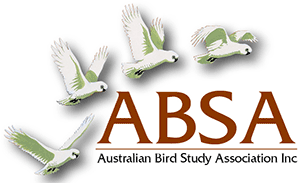A sonographic analysis of a flute-like dialect in territorial songs of the Superb Lyrebird Menura novaehollandiae in the New South Wales North Coast and New England Tableland Bioregions
| Posted: |
20/04/2020 |
| Author(s): |
Carol Probets, Hollis Taylor, Vicki Powys |
This paper examines flute-like territorial songs and other vocalisations of Superb Lyrebirds Menura novaehollandiae in forests of the New South Wales North Coast and New England Tableland Bioregions, based on >90 hours of recordings made from 1970 to 2014. Songs from a 1920s flute-mimicking lyrebird allegedly spread outwards from a fixed point at Allans Water. We examine potential evidence for this in territorial song structure, mimicry, and invitation-display calls across the region. In a macro-geographic overview, sonograms are paired with maps to establish spatial and temporal patterns of vocalisations, supplemented by audio links and transparent sonogram overlays. Distinctive and linked phrases of mimicry are used as markers to track temporal and spatial stability in song. Results indicate that the Superb Lyrebird’s vocal repertoire in this area is stable, making it unlikely that a ‘new song’ was taken up quickly, as suggested in the ‘flute’ story. This finding corresponds with what is known of Superb Lyrebirds in other areas, namely that calls are learned mainly from conspecifics, show regional variation, and remain relatively consistent over time.
>> Download Abstract |
File Size: 108KB
>> Download Complete PDF | File Size: 4.83MB
